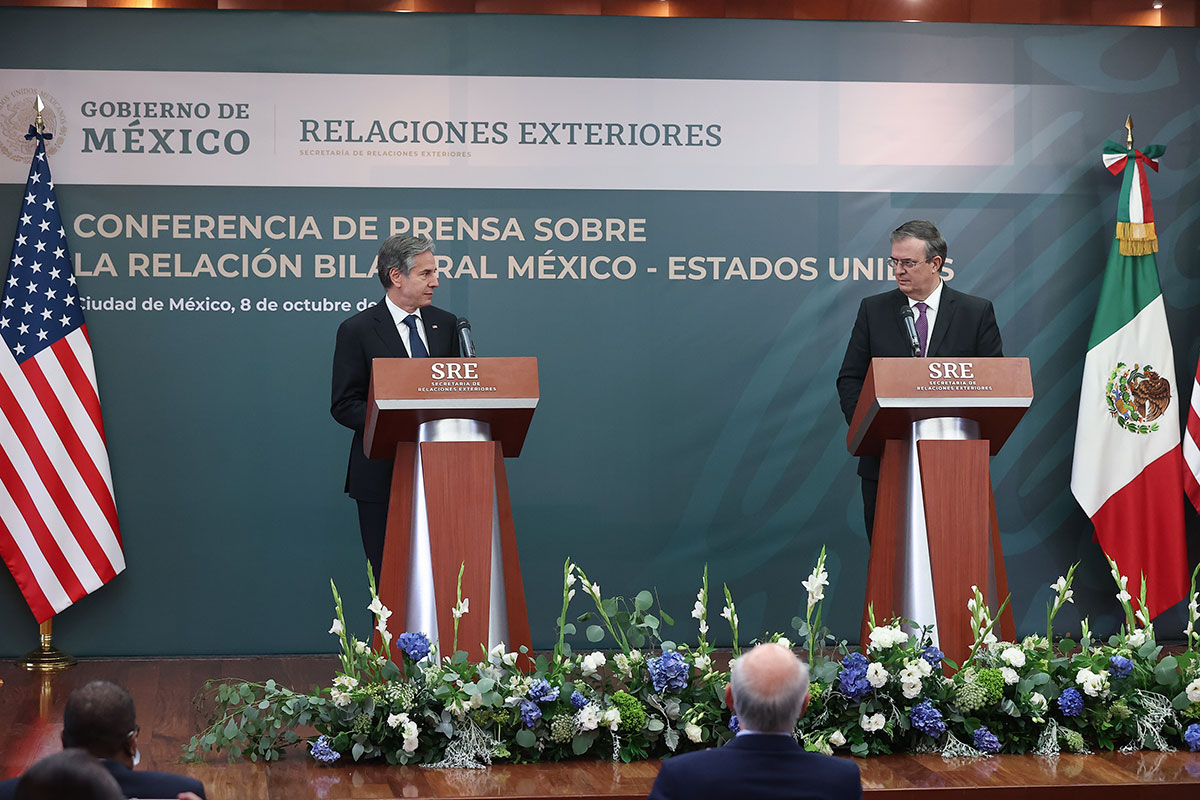What was the Merida Initiative and what changes with the Bicentennial Understanding agreed by Mexico and the US?


The US and Mexico agreed to terminate the “Merida Initiative” and give way to the “Bicentennial Understanding.”
Photo: Hector Vivas / Getty Images
Mexico and the United States held the High Level Security Dialogue (DANS) on Friday, October 8 to turn the page completely to the 2008 Merida Initiative, a support plan against drug traffickers and the border, and promote the new Bicentennial Understanding.
These are the main keys to understanding what this controversial initiative promoted by former President Felipe Calderón (2006-2012), architect of the so-called war on drug trafficking, consists of.
When did the Merida Initiative start?
In 2007 Calderón requested greater cooperation with USA to fight organized crime In response, the Merida Initiative was promoted, a package of anti-drug assistance projects to strengthen the rule of law in Mexico that officially began in 2008.
The goal was to “counter drug-fueled violence” in both countries, according to the US embassy in Mexico.
From 2008 to 2020, the United States allocated more than $ 3.2 billion in equipment, training and capacity-building support through the initiative, according to the White House.
What were the initial pillars of the program?
In a first stage, from 2008 to 2010, Congress allocated about $ 1.5 billion for the purchase of equipment, including airplanes and helicopters in support of Mexico’s security forces, according to the public policy research institute of the United States Congress, the Congressional Research Service (CRS).
And although no joint operations of any kind were conducted, it assisted in the fight against drug trafficking, border security, public security, strengthening of institutions, and support and intelligence.
In a second stage, from 2011 to 2017, the scope of the Merida Initiative was expanded through four pillars.
These were the fight against transnational crime; the institutionalization of the rule of law with a judicial, police and penitentiary reform; the creation of a modern border with immigration control; and building resilient communities against violence and drugs.
With the arrival of Donald Trump to the White House in 2017, the Merida Initiative was reoriented and made it a priority to reduce drug production, control border traffic and improve port security.
While Trump praised Mexico’s “redoubled efforts against illegal migration,” he criticized its anti-drug performance, according to the CRS analysis.
The criticism received
The main criticisms that the Merida Initiative received throughout these years focused on the excessive emphasis on the use of military forces. to combat organized crime, as well as the persistent violation of human rights.
In addition, in those years the number of homicides in Mexico grew. Mexico’s strategy of arresting (and extraditing) drug lords only led to a fragmentation of the cartels and greater violence.
“The Merida Initiative has failed to address two obstacles that permeate security in Mexico: widespread violence and institutionalized corruption,” the InSight Crime research center said in a 2018 report.
What is the Bicentennial Understanding?
Just this week, the Mexican Foreign Minister, Marcelo Ebrard, announced this “new stage” to leave behind the “welfare” Mérida Initiative.
It is the Bicentennial Understanding, also called the United States-Mexico Bicentennial Framework for safety, public health, and safe communities.
This new strategy seeks to address the “root causes” of violence, addressing both cross-border crime and drug use with a “public health” approach or promoting the strengthening of Justice, among other points.
In addition, they offered more joint operations such as the one on October 6, which made it possible to block accounts of the Jalisco Nueva Generación Cartel (CJNG).
“This new framework establishes a comprehensive and long-term approach to guide future bilateral actions. Together, we can build a system of peace, justice and respect for the rule of law“, Both countries stressed.
It will come into force in 2022 on the 200th anniversary of bilateral relations between the two countries.
It may interest you:
· VIDEO: Protesters break up AMLO meeting in Puebla and endanger his safety
· Mexico and the US refine details of the High Level Dialogue on Security to be held in the Mexican capital
· AMLO says that “tax haven cases such as those revealed in Pandora Papers are nothing new” in Mexico
.



